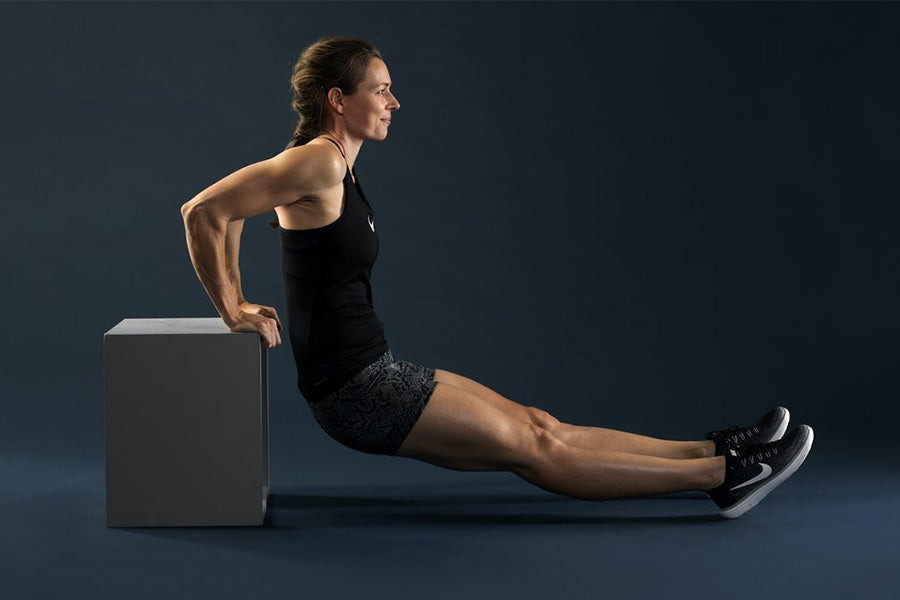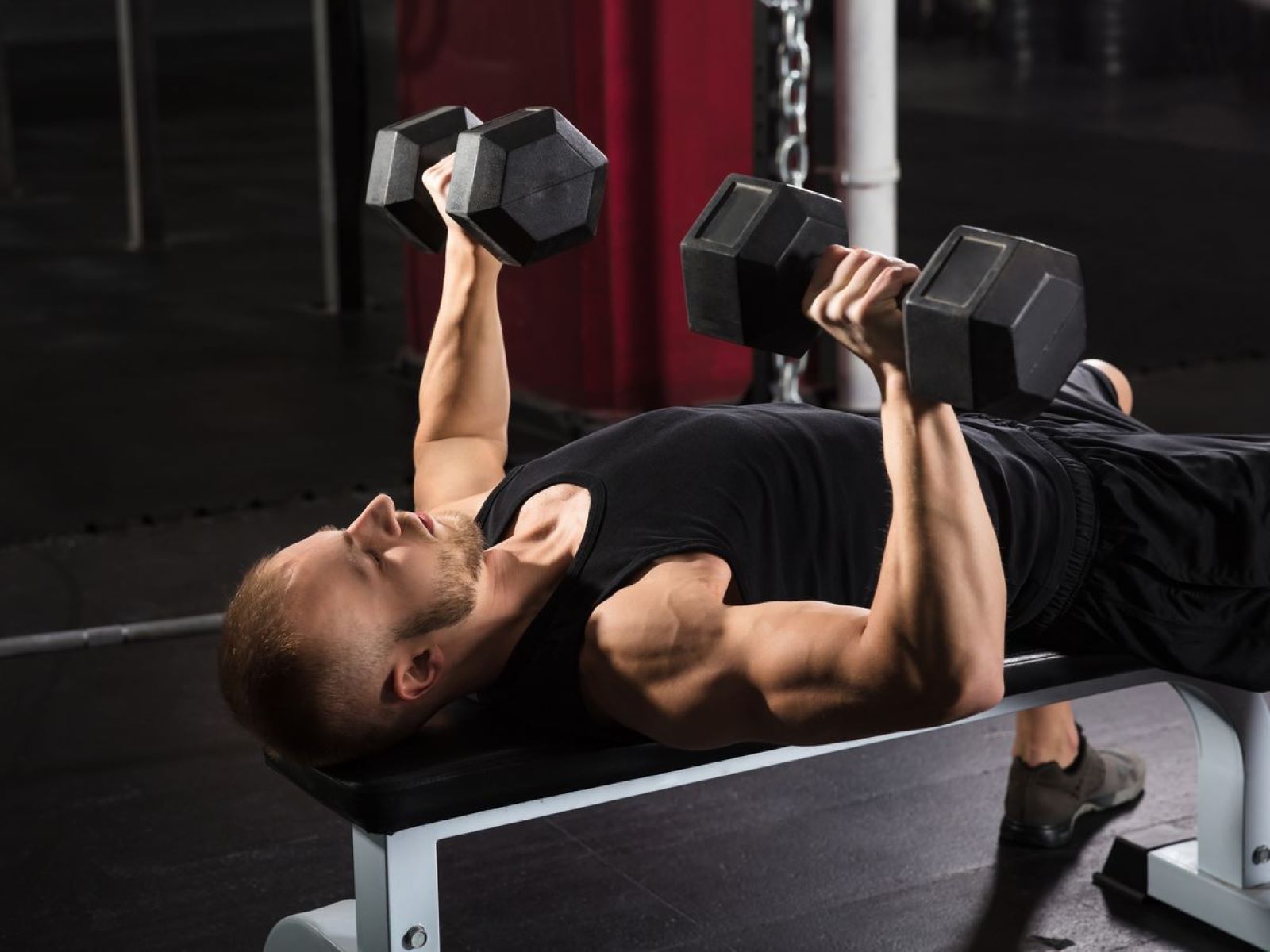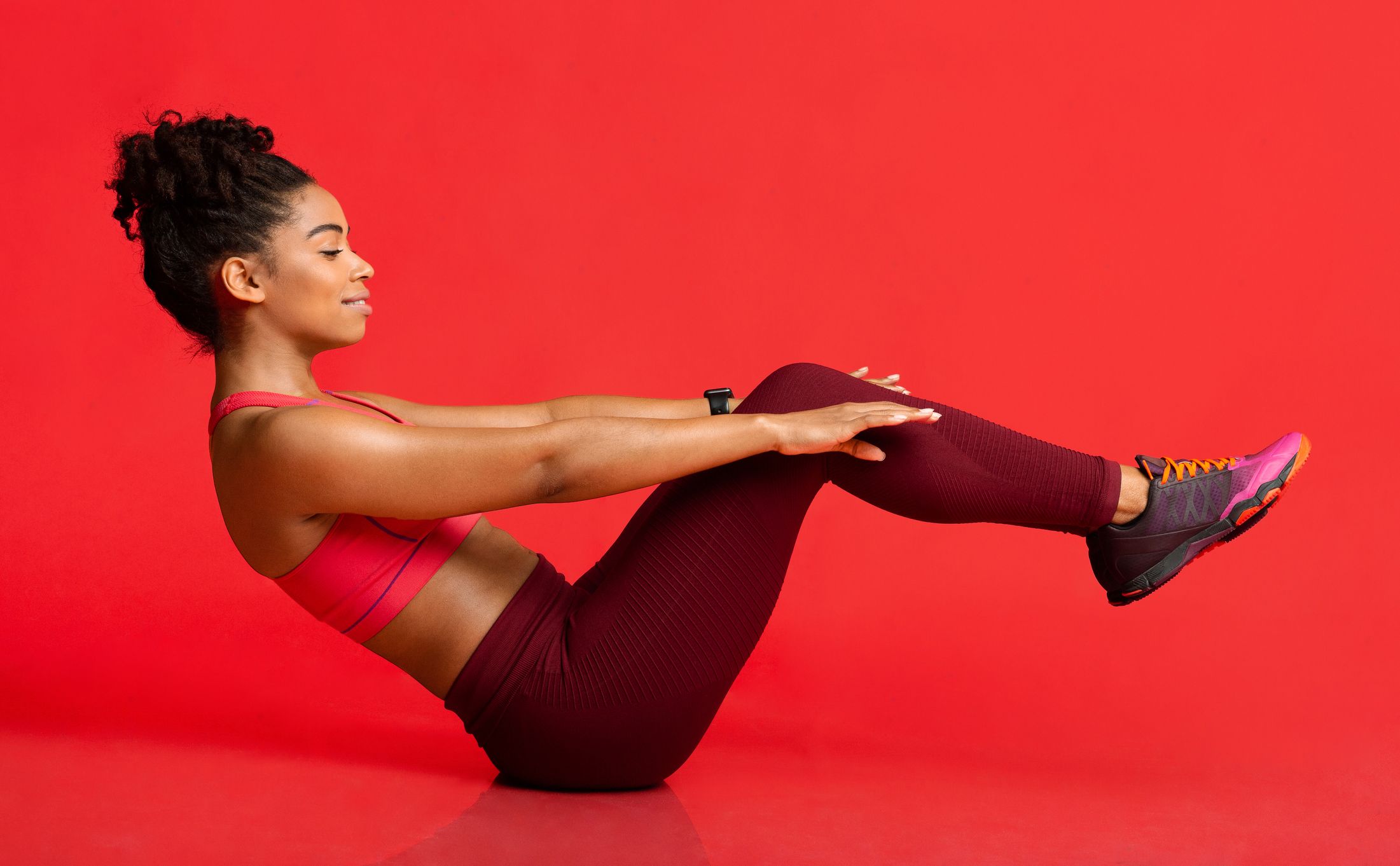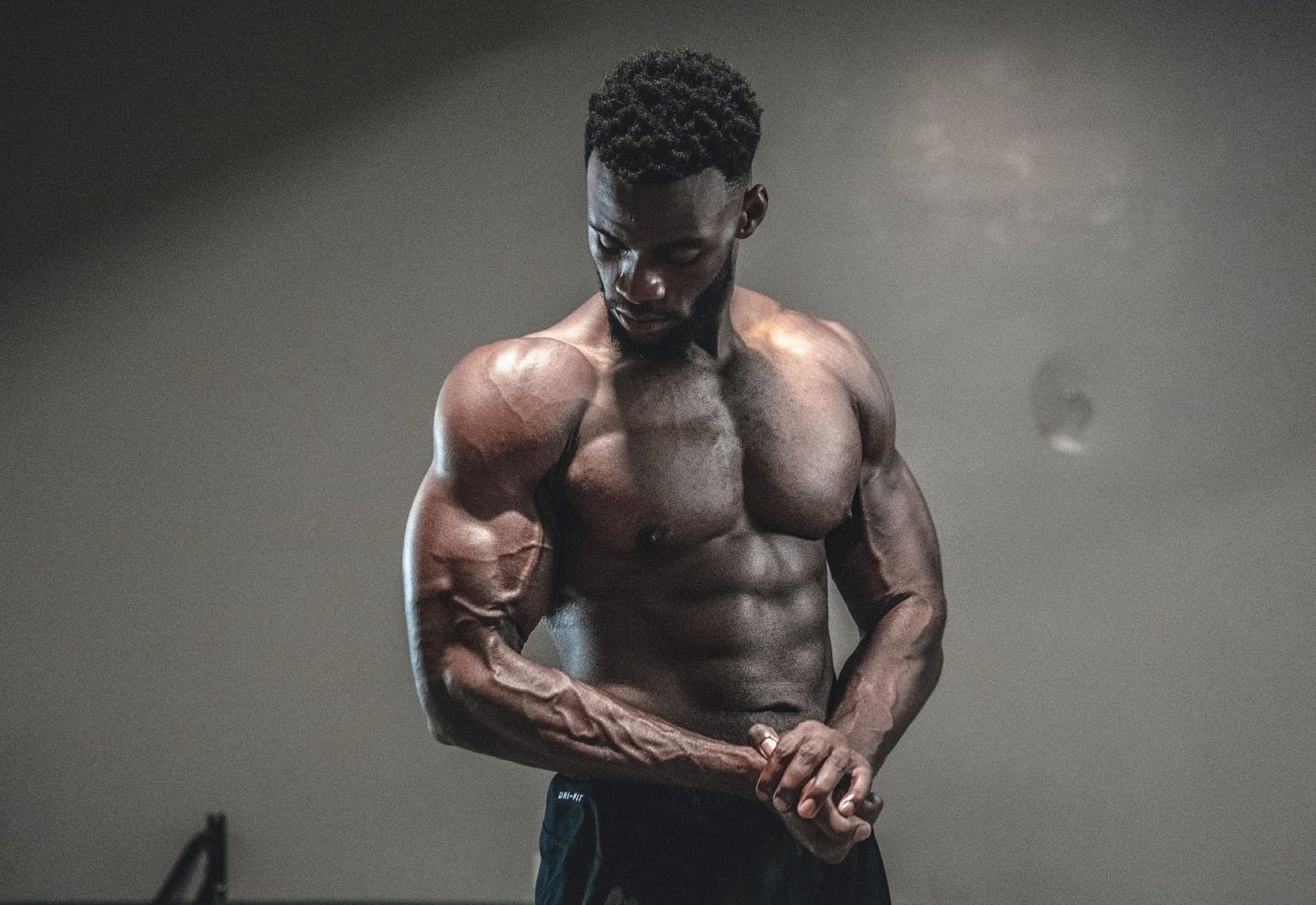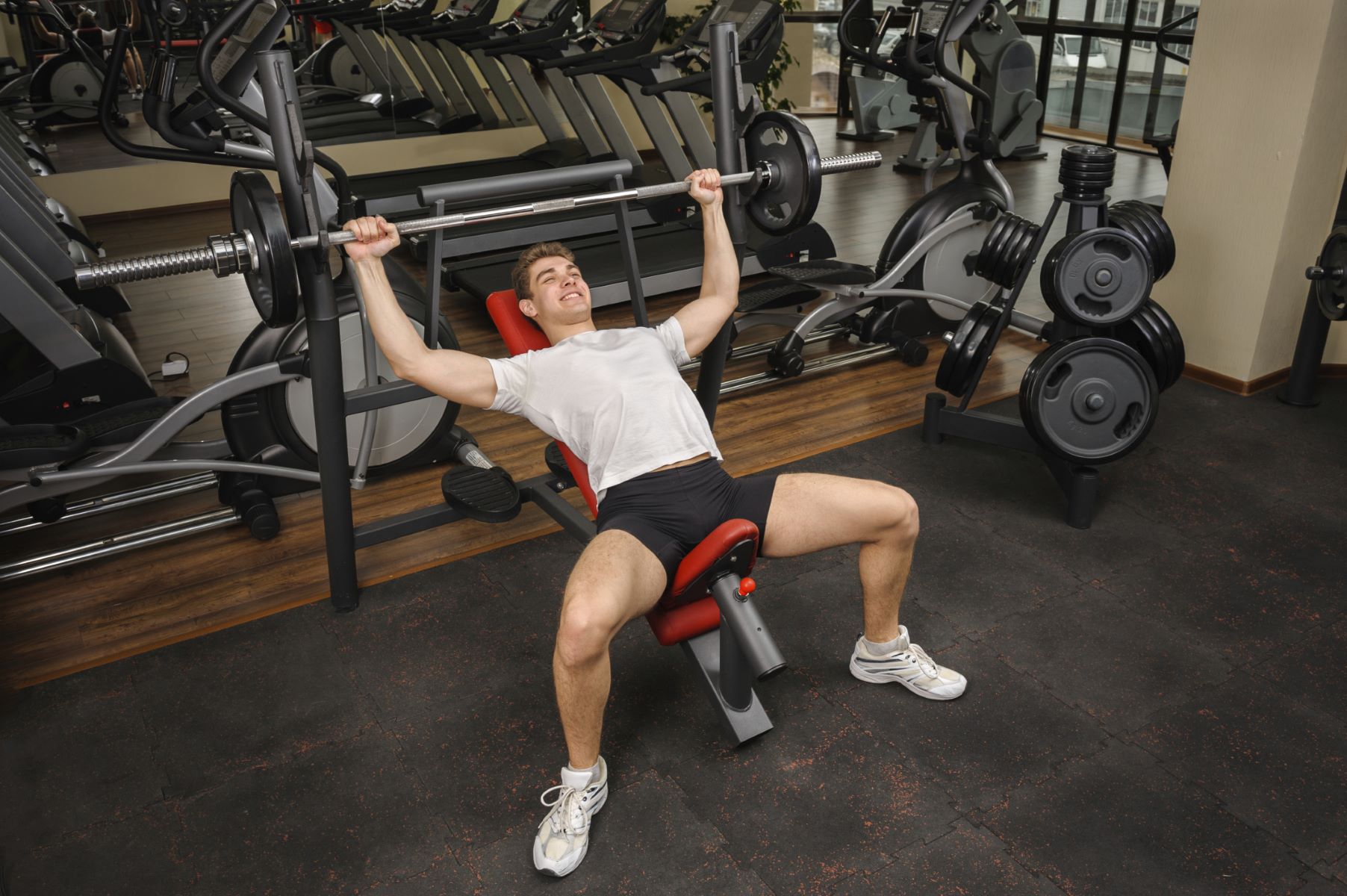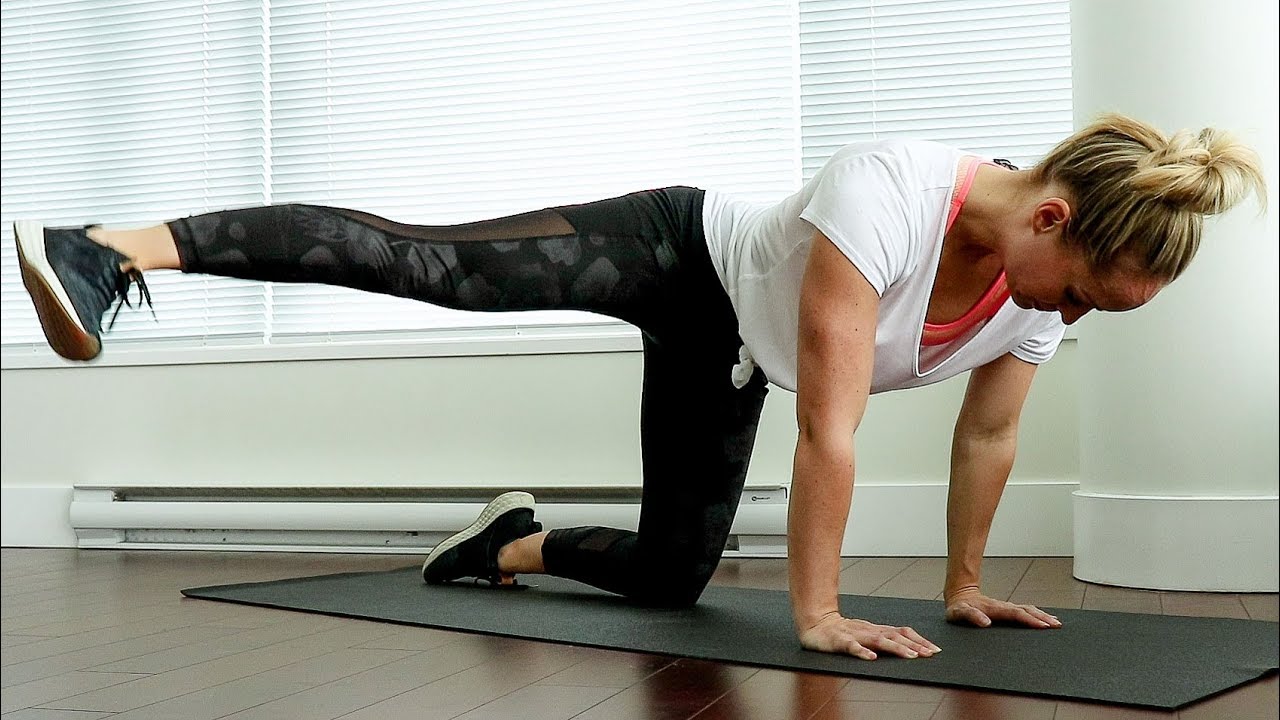

Featured
What Is A Hip Dip Exercise
Published: September 28, 2023
Want to know what a hip dip exercise is? Check out this featured article and learn how to tone your hips and achieve a smoother silhouette.
Introduction
Welcome to the world of fitness! If you have ever looked at your hips and noticed a slight indentation between your hip bone and thigh, then you are familiar with what is commonly known as a hip dip. While this natural anatomical feature is completely normal and common, there are certain exercises you can do to target and strengthen the muscles around your hips, ultimately minimizing the appearance of hip dips.
Hip dips, also known as violin hips or high hips, refer to the inward curve that can be seen on the outer edges of the hips. These indentations are caused by the shape and alignment of our pelvic bones and can vary in prominence from person to person. While some people have more pronounced hip dips, others may have less noticeable ones or even none at all. It’s important to remember that there is no right or wrong when it comes to hip shape, as everyone’s body is unique and beautiful in its own way.
However, if you feel self-conscious about your hip dips or simply want to strengthen and tone the muscles in this area, incorporating hip dip exercises into your fitness routine can be beneficial. By targeting the muscles around the hips, such as the gluteus medius, gluteus minimus, and tensor fasciae latae, you can enhance the overall shape and appearance of your hips.
In this comprehensive guide, we will take a closer look at the anatomy of hip dips, explore the causes behind them, examine the benefits of targeting hip dips through exercise, and provide you with a sample hip dip workout routine. So, whether you are looking to build strength or simply boost your confidence, let’s dive in and discover the world of hip dip exercises!
Anatomy of the Hip Dip
To better understand hip dips, it’s important to have a basic understanding of the anatomy of the hip area. The hip dip is created by the shape and alignment of the pelvic bones, specifically the ilium and the femur.
The ilium is the largest and uppermost part of the pelvis, forming the hip bone. It consists of two wing-like structures that project out on each side. These wings curve inward towards the midline of the body, creating a natural dip or indentation in the hip area.
The femur, also known as the thigh bone, connects to the hip bone at the hip joint. It is the longest and strongest bone in the human body. The alignment of the femur with the ilium contributes to the appearance of hip dips as well.
The muscles surrounding the hip area also play a role in the presence of hip dips. These muscles include the gluteus medius, gluteus minimus, and tensor fasciae latae. The gluteus medius and minimus are located on the outer side of the hip, while the tensor fasciae latae is a small muscle that runs down the outer side of the thigh.
In individuals with more pronounced hip dips, it is possible that the muscles in this area are not as developed or do not have enough volume to fill in the natural indentations. By strengthening these muscles, you can create a more rounded and sculpted appearance to the hips, reducing the appearance of hip dips.
Now that we have a better understanding of the anatomy behind hip dips, let’s explore the various causes that contribute to their formation and understand why some individuals have more prominent hip dips than others.
Causes of Hip Dips
Hip dips are a natural feature of the body and can be influenced by several factors. Understanding the causes behind hip dips can help you embrace and appreciate your unique body shape. Here are some common factors that contribute to the formation of hip dips:
- Bone Structure: The shape and alignment of your pelvic bones, specifically the ilium and the femur, play a significant role in the presence of hip dips. Individuals with a higher and more curved ilium bone are more likely to have noticeable hip dips. Similarly, the position and angle of the femur in relation to the ilium can also contribute to the appearance of hip dips.
- Muscle Development: The muscles around the hip area, particularly the gluteus medius, gluteus minimus, and tensor fasciae latae, can affect the visibility of hip dips. When these muscles are not well-developed or lack volume, the dips may appear more prominent. Targeted exercises can help strengthen and tone these muscles, reducing the appearance of hip dips in the process.
- Body Fat Distribution: The distribution of body fat can affect the visibility of hip dips. Individuals with a higher percentage of body fat may have less pronounced hip dips as the fat can fill in the indentations. Conversely, people with lower body fat percentages or those who tend to store fat in other areas of their body may have more noticeable hip dips.
- Genetics: Genetics play a significant role in determining body shape and the presence of hip dips. Just like other physical traits, such as eye color or height, hip dips can be inherited from your parents. If your immediate family members have hip dips, chances are you may have them as well.
It’s important to note that hip dips are a normal and natural part of the body. They do not indicate any health concerns or deficiencies. Embracing your unique body shape and understanding the factors that contribute to hip dips can help promote body positivity and self-acceptance.
In the next section, we will dive into the benefits of targeting hip dips through focused exercises. By understanding the advantages of these exercises, you can make an informed decision about incorporating them into your fitness routine.
Benefits of Targeting Hip Dips
While hip dips are a natural part of the body and there is nothing wrong with having them, there are several benefits to targeting and strengthening the muscles around the hips. Incorporating exercises specifically designed to address hip dips can provide you with the following advantages:
- Toning and Sculpting: By targeting the muscles around the hips, such as the gluteus medius, gluteus minimus, and tensor fasciae latae, you can tone and sculpt these areas. Strengthening these muscles can lead to a more defined and rounded appearance, reducing the visibility of hip dips.
- Improved Body Balance: Working on the muscles around the hips can improve your overall body balance and stability. The gluteus medius, in particular, plays a vital role in maintaining proper hip alignment and preventing compensatory movements, which can improve your posture and reduce the risk of injuries during physical activities.
- Enhanced Body Confidence: It’s no secret that feeling good about your body can significantly impact your self-confidence. By targeting and reducing the visibility of hip dips, you may boost your body confidence, allowing you to feel more comfortable and positive about your appearance.
- Functional Strength: Exercises that target the hip muscles can improve your overall strength and functionality. Strong hip muscles can enhance your performance in various activities, such as running, jumping, and squatting, as these muscles play a crucial role in generating power and stabilizing the hips.
- Increased Range of Motion: Strengthening the muscles around the hips can improve your hip joint’s range of motion. This can be beneficial not only in daily life activities but also in sports and fitness endeavors, allowing you to move more efficiently and with greater ease.
It’s important to note that the benefits of targeting hip dips go beyond simply altering your body’s appearance. The focus should be on overall strength, stability, and body confidence. Remember, everyone’s body is unique, and having hip dips is a natural part of that uniqueness.
In the next section, we will explore how to perform a variety of hip dip exercises. These exercises are designed to target and strengthen the muscles around the hips, helping you achieve your fitness goals while embracing your body’s natural shape.
How to Perform Hip Dip Exercises
Now that you understand the benefits of targeting hip dips, it’s time to learn how to perform hip dip exercises. These exercises specifically target the muscles around the hips, helping to strengthen and tone the area. It’s important to note that consistency and proper form are key to achieving optimal results.
Here are some hip dip exercises you can incorporate into your fitness routine:
- Side Lunges: Start by standing with your feet hip-width apart. Take a wide step to the side with your right foot, bending your right knee as you lower your body down into a lunge position. Keep your left leg straight and your weight in your right heel. Push off with your right foot to return to the starting position. Repeat on the other side.
- Curtsy Lunges: Stand tall with your feet hip-width apart. Take a step back with your right foot and cross it behind your left leg, as if you were performing a curtsy. Bend both knees, lowering your body down into a lunge position. Push off with your right foot to return to the starting position. Repeat on the other side.
- Side-lying Leg Raises: Lie on your left side with your legs extended and stacked on top of each other. Rest your left forearm on the floor for support. Engage your core and lift your right leg up towards the ceiling, keeping it straight. Lower your leg back down in a controlled manner. Repeat on the other side.
- Donkey Kicks: Start on all fours with your hands directly under your shoulders and your knees under your hips. Engage your core and lift your right leg back and up, keeping your knee bent at a 90-degree angle. Lower your leg back down and repeat on the other side.
- Fire Hydrants: Begin on all fours with your hands directly under your shoulders and your knees under your hips. Keeping your knee bent, lift your right leg out to the side, as if you were a dog lifting its leg on a fire hydrant. Lower your leg back down and repeat on the other side.
When performing these exercises, focus on maintaining proper form, engaging the target muscles, and moving through a full range of motion. Start with a weight or resistance level that challenges you but still allows for correct execution. Gradually increase the intensity as your strength improves.
Incorporating these hip dip exercises into your fitness routine, along with other strength and cardio exercises, can help you achieve your goals of strengthening the muscles around the hips and minimizing the appearance of hip dips. Remember to listen to your body, take rest days as needed, and consult with a fitness professional if you have any concerns or specific limitations.
In the next section, we will provide you with a sample hip dip workout routine that combines these exercises for a well-rounded workout.
Sample Hip Dip Workout Routine
To effectively target and strengthen the muscles around your hips, it is recommended to incorporate a dedicated hip dip workout routine into your fitness regimen. This sample workout routine combines various hip dip exercises to provide a comprehensive training session for your hips.
Remember to warm up before starting any workout. You can perform a few minutes of light cardiovascular exercises, such as jogging in place or jumping jacks, to increase blood flow to the muscles and prepare your body for the workout.
Here is a sample hip dip workout routine for you to try:
- Side Lunges: Perform 3 sets of 12-15 reps on each side, alternating between left and right lunges. Rest for 30 seconds between sets.
- Curtsy Lunges: Perform 3 sets of 12-15 reps on each side, alternating between left and right lunges. Rest for 30 seconds between sets.
- Side-lying Leg Raises: Perform 3 sets of 12-15 reps on each side. Rest for 30 seconds between sets.
- Donkey Kicks: Perform 3 sets of 12-15 reps on each side. Rest for 30 seconds between sets.
- Fire Hydrants: Perform 3 sets of 12-15 reps on each side. Rest for 30 seconds between sets.
To make the workout more challenging, you can increase the number of sets or add resistance by using ankle weights or resistance bands. Remember to maintain proper form throughout each exercise and concentrate on engaging the target muscles.
After completing the workout, take a moment to cool down and stretch your muscles. Stretching can help improve flexibility and reduce muscle soreness. Focus on stretching the muscles of your hips, including the glutes, hip flexors, and hamstrings.
It’s important to note that this sample hip dip workout routine is just a starting point. Feel free to adjust the number of sets, reps, and rest periods based on your fitness level and goals. Also, listen to your body and modify or skip any exercises that cause discomfort or pain.
In the next section, we will share some tops for maximizing your results when targeting hip dips. These tips will help you optimize your workout routine and support your overall fitness journey.
Tips for Maximizing Results
To maximize your results when targeting hip dips, it’s important to focus not only on the exercises but also on other factors that contribute to overall fitness and body transformation. Here are some tips to help you optimize your efforts and achieve the best possible results:
- Consistency: Consistency is key when it comes to seeing progress. Aim to perform your hip dip workouts at least 2-3 times per week to allow your muscles to adapt and grow stronger over time.
- Progressive Overload: As your strength improves, gradually increase the intensity of your workouts. This can be done by adding resistance, increasing the number of sets, or challenging yourself with more difficult variations of the exercises.
- Proper Form: Focus on maintaining proper form during your hip dip exercises. This ensures that you are targeting the correct muscles and reduces the risk of injury. If you’re unsure about proper form, consider working with a certified personal trainer for guidance.
- Diet and Nutrition: Pay attention to your diet and nutrition to support your fitness goals. Eating a balanced diet that includes lean proteins, healthy fats, and plenty of fruits and vegetables can fuel your workouts and aid in muscle recovery.
- Adequate Rest and Recovery: Give your body time to rest and recover between workouts. This allows your muscles to repair and grow stronger. Aim for 1-2 days of rest each week and prioritize getting quality sleep.
- Variety and Progression: To continually challenge your muscles, incorporate a variety of hip dip exercises into your routine. This helps prevent plateaus and keeps your workouts engaging and enjoyable.
- Listen to Your Body: Pay attention to how your body feels during and after your workouts. If something feels uncomfortable or painful, modify or skip the exercise. It’s important to prioritize safety and avoid injury.
- Stay Hydrated: Proper hydration is crucial for overall health and performance. Make sure to drink enough water throughout the day, especially during your workouts, to stay hydrated and maintain optimal muscle function.
Remember, getting rid of hip dips or achieving a certain body shape is not the ultimate goal. Embrace your body’s unique shape and focus on overall health and fitness. Celebrate the progress you make along the way and enjoy the journey toward a stronger and more confident you.
In the next section, we will discuss some precautions and safety considerations to keep in mind when targeting hip dips. These tips will help ensure that you exercise in a safe and effective manner.
Precautions and Safety Considerations
When targeting hip dips through exercise, it’s important to prioritize safety and take certain precautions. Here are some key considerations to keep in mind to protect yourself from injury and exercise effectively:
- Consult with a Healthcare Professional: If you have any pre-existing medical conditions or injuries, it’s essential to consult with a healthcare professional before starting any new exercise program. They can provide guidance specific to your needs and help you determine the best approach.
- Proper Warm-up: Before diving into your hip dip workout, make sure to warm up your muscles with some light cardiovascular exercises. This helps increase blood flow, loosen up your joints, and prepare your body for the upcoming workout.
- Start Slowly: If you’re new to hip dip exercises or strength training in general, start with lighter weights and fewer repetitions. Gradually increase the intensity as your strength and stamina improve. It’s important to allow your muscles and connective tissues to adapt and avoid overexertion.
- Pay Attention to Form: Maintaining proper form is crucial to prevent injury and effectively target the intended muscles. If you’re uncertain about the correct form for a specific exercise, consider working with a certified personal trainer who can guide you and provide feedback.
- Listen to Your Body: Your body’s feedback is the best indicator of what it can handle. If you experience pain, dizziness, or any other unusual symptoms during exercise, stop immediately. Pushing through discomfort can lead to injury, so it’s essential to listen to your body and make modifications or consult a professional if necessary.
- Use Appropriate Weight and Equipment: When adding resistance to your hip dip exercises, choose weights and equipment that are appropriate for your fitness level. Gradually increase the weight as your strength improves, ensuring that you can maintain proper form throughout the movement.
- Stay Hydrated: Proper hydration is crucial during exercise. Drink water before, during, and after your workouts to replenish fluids lost through sweat and support optimal muscle function.
- Recovery and Rest: Allow your body enough time to recover between workouts. Muscles grow and strengthen during periods of rest, so make sure to incorporate rest days into your routine. Additionally, prioritize quality sleep to support proper recovery and overall well-being.
Remember, everyone’s body is unique, and progress may vary from person to person. Be patient with yourself and celebrate even the smallest achievements. Your journey to target and strengthen your hip dips is part of a larger commitment to overall health and self-care.
Now that you’re equipped with the necessary precautions and safety considerations, you can confidently incorporate hip dip exercises into your fitness routine. In the final section, we will summarize the key points covered and offer some closing thoughts.
Conclusion
Congratulations on completing this comprehensive guide to understanding and targeting hip dips! By now, you should have a clear understanding of what hip dips are, the factors that contribute to their formation, and the benefits of incorporating targeted exercises into your fitness routine.
Remember, hip dips are a natural and normal part of the body. Embracing your unique body shape and focusing on overall health and fitness should be the central goal. Targeting hip dips through exercises can help strengthen and tone the muscles around the hips, enhancing the overall appearance and promoting body confidence.
Throughout this guide, we explored various hip dip exercises such as side lunges, curtsy lunges, side-lying leg raises, donkey kicks, and fire hydrants. These exercises specifically target the muscles around the hips and can be performed with proper form and progressive overload for optimal results.
It’s important to remember to prioritize safety and listen to your body. If you have any concerns or pre-existing medical conditions, consult with a healthcare professional before starting any new exercise program. Take precautions such as warming up, using proper form, and gradually increasing the intensity of your workouts.
Lastly, focus on the journey rather than striving for a specific body shape. Embrace the changes you make, both physically and mentally, and celebrate your progress along the way. Remember that positive body image comes from self-acceptance and self-care.
Now that you’re armed with knowledge and a sample workout routine, it’s time to put it into action. Stay consistent, be patient, and enjoy the process of targeting and strengthening your hips. Your unique body shape deserves to be celebrated, and by incorporating hip dip exercises into your routine, you can feel strong, confident, and empowered in your own skin.
